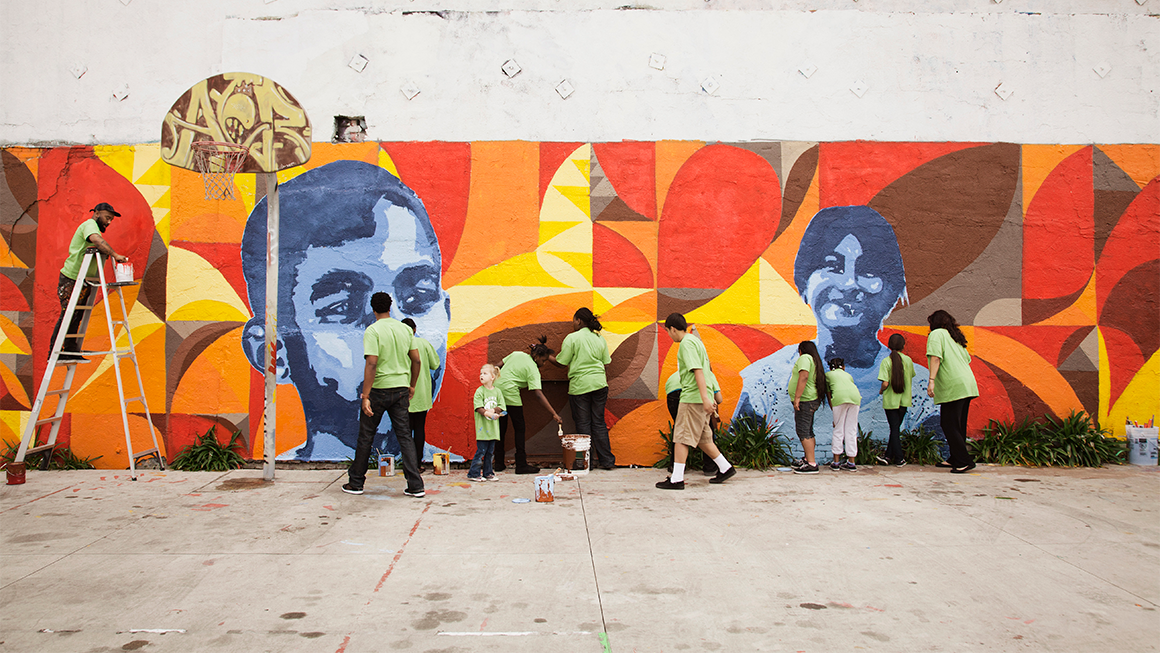
Changemakers throughout the US are working across sectors, localities, and policy areas to advance economic mobility for people and communities. But to be able to achieve this at scale, these leaders have voiced the need for greater collaboration and alignment around a shared vision.
In response, a steering committee of experts from academia, philanthropy, and community and nonprofit organizations—who seldom have opportunities to connect—met to explore solutions. As one participant noted, the committee “brought together groups of people working in different areas, most of which did not have working relationships already. We were engaging different thinking, different organizational models, different populations and regions of the US than any of us typically did.”
The committee’s work ultimately generated a blueprint for an initiative that could deepen connections across the economic mobility field. In the process of developing their bold proposal, this group of visionaries modeled the power of “alignment without agreement” to advance its goals.
As leaders operate across all levels of government, foundations, and the social sector to champion economic success for all, they can leverage proven approaches for working with diverse groups to make progress toward common goals.
Convening with shared values
The steering committee’s purpose and values set the foundation for a unique planning process.
Throughout their two-year journey, the group embodied an epistemic community, a deliberative body that can accelerate impact because of its diverse composition and dynamic capabilities. In their research across almost 200 US communities, Chris Brenner and Manuel Pastor argue that these communities are “diverse in their membership and sources of knowledge and dynamic in their ability to withstand shocks, continuously learn, and adjust over time.”
Research also finds that these groups are characterized by four traits:
- shared values and norms that justify social action
- common understanding of a multidisciplinary problem that requires a collective response
- mutual appreciation for the group members’ different areas of expertise
- specialized practices that support a shared agenda
United in their commitment to nontransactional partnership, the steering committee did not settle for easy answers. Members often observed that their collective work felt different because they resisted false consensus—never assuming shared beliefs, intentionally surfacing differing perspectives, and pushing each other’s thinking at each step of the planning process.
Practicing alignment without agreement
The values the committee shared helped them establish a precedent for healthy disagreement and debate.
At the outset of its planning process, the steering committee committed to alignment without agreement. This meant they would take action in service of a shared goal, even in the absence of complete consensus about how they would achieve their goal together. Instead of settling for majority rule, they worked toward alignment so that all participants would accept a decision before moving forward.
This alignment was critical as the committee developed a vision statement, an economic rights framework, and guiding principles. As they developed these materials, members practiced productive, generative conflict regularly. From unique vantage points informed by their experiences, they worked to refine a composite understanding of the complex obstacles to economic mobility in the US. This process deepened trust and strengthened group norms.
For example, in developing the committee’s vision statement, members voiced objections and grappled with trade-offs. Should the vision statement focus on people or systems? Would it be more effective to name time-bound objectives or present far-reaching goals? Should America be framed as a system to be petitioned or as a constituency of diverse individuals? These choices had meaningful implications for the effort’s strategy, and deliberations reflected the various places, experiences, and worldviews represented around the table.
Instead of calling for final votes, the refinement process continued until all participants were willing to accept the result. With an eye toward inclusion and precision of language, the committee eventually supported a statement unanimously. They did so not because they each completely agreed with the statement’s contents, but because they were willing to move forward with acceptable unresolved tension in service of a shared vision.
Although the group’s formal planning process has concluded, several members have continued to convene voluntarily. These leaders are poised to amplify their impact because they have built enough trust to disagree while remaining committed to collective action.
How can leaders use alignment without agreement?
As leaders from different professional communities convene to address shared challenges, they can use these key questions—which are mapped to the four characteristics above—to ground their collaboration:
- What are the norms and beliefs that bring us to this work? Are we being honest about how our mental models might differ?
- Have we explicitly diagnosed the problem? Do we share a common understanding on the underlying root causes we seek to address together?
- Are we all well positioned to advance the common agenda based on our respective domains of expertise? What expertise isn’t represented in the room, and what perspectives might be missing as a result?
- Do we each see elements of our work represented in the common agenda? To what extent is there tension, and to what extent are there complements, between our approaches to enacting change?
By fostering honest reflections and collective analysis, these questions can help any diverse group accelerate pathways toward collaborative impact.
Let’s build a future where everyone, everywhere has the opportunity and power to thrive
Urban is more determined than ever to partner with changemakers to unlock opportunities that give people across the country a fair shot at reaching their fullest potential. Invest in Urban to power this type of work.